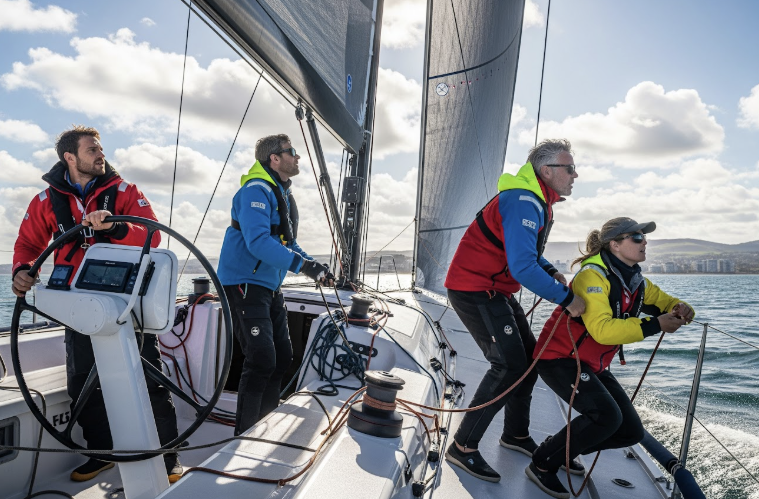A boat is a world in miniature, a self-contained system hurtling across an unforgiving environment. Its safety, progress, and very survival depend on a single, fragile resource: the collective competence of its crew. The romantic notion of a lone, weathered skipper single-handedly commanding their vessel is a dangerous fantasy. On the water, ignorance isn’t bliss; it’s a liability that puts everyone aboard at risk. Ensuring your entire crew possesses fundamental skills isn’t just a recommendation, it’s the bedrock of a safe and successful voyage.
Building a Foundation of Shared Knowledge
How do you transform a group of enthusiastic but inexperienced friends into a cohesive, capable team? The answer lies in structured, immersive training. Instead of a skipper attempting to teach everything ad-hoc while managing the boat, a focused course levels the playing field. An intensive program like the 5-Day RYA Competent Crew Course is designed for this exact purpose. In just one week, novices learn essential terminology, ropework, sail handling, and helming under the guidance of a professional instructor. This creates a shared vocabulary and a baseline of practical skills, ensuring everyone starts the journey speaking the same nautical language.
The Critical Role of Every Pair of Hands
When conditions deteriorate, a vessel needs more than one competent person. A sudden squall hits, a sail tears, or, in a worst-case scenario, a person goes overboard. In these moments, the skipper cannot be everywhere at once. A trained crew functions as an extension of the captain’s will. One person can steer the recovery course while another prepares the safety equipment. Someone who knows how to start the engine can do so while others reef the mainsail. Each trained individual becomes a force multiplier, turning a potential emergency into a managed, controlled situation. An untrained passenger, by contrast, becomes another variable to manage, another life to protect.
Fostering Confidence and Situational Awareness
Fear often stems from the unknown. A novice on a boat is consumed by uncertainty, unable to interpret the boat’s motion, the sound of the wind, or the urgency in the skipper’s voice. Training replaces this anxiety with understanding. A crew member who has practiced man-overboard drills knows what to expect and how to react. Someone who has learned to tie a bowline understands its critical strength. This knowledge breeds a calm, watchful confidence. They become proactive lookouts, able to spot potential hazards and understand the rhythm of life aboard, contributing to a safer and more relaxed atmosphere for everyone.
The Accessibility of Modern Training
A common excuse for untrained crews is a lack of time. “We can’t all take months off to learn,” the thinking goes. This barrier has been dismantled by the proliferation of high-quality, short-duration courses. Beyond the five-day competent crew program, weekend courses in sea survival, first aid, and VHF radio operation are widely available. These are not years-long commitments; they are intensive, practical weekends that deliver life-saving competencies. For a group planning a significant passage, investing one week in collective training is a negligible cost compared to the duration of the trip and the value of the vessel, and the lives, aboard.
Creating a True Partnership at Sea
Ultimately, a skilled crew transforms the dynamic of the journey. The skipper shifts from a stressed director, constantly issuing basic commands, to a true captain who can delegate tasks and focus on broader navigation and strategy. Watch systems can be established, allowing for proper rest. Complex maneuvers become smooth, coordinated efforts rather than chaotic scrambles. The voyage becomes a shared achievement, a partnership built on mutual respect and proven capability. The memory isn’t of one person’s accomplishment, but of a team that worked in harmony with the wind and the waves.
Sailing with an untrained crew is like flying a plane where only the pilot knows how to land. It’s a gamble with extraordinarily high stakes. By investing in collective education, you are not just buying a course; you are purchasing peace of mind, building a true team, and honoring the responsibility you have for everyone who trusts you to take them to sea. The strongest link in your safety chain is a crew that knows what they’re doing.
Published by HOLR Magazine.


